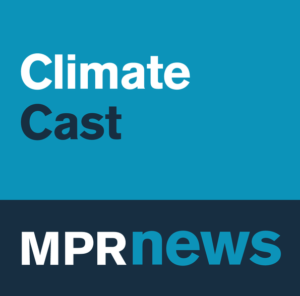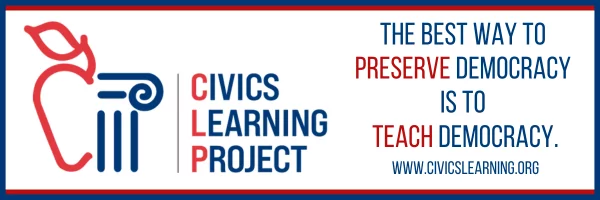The United States officially rejoined the Paris climate agreement on Friday, February 19, 2021. Scientists and foreign diplomats welcomed the U.S. return to the 2015 pact, which is intended to prevent catastrophic climate change. Former Secretary of State John Kerry, who is now United States Special Presidential Envoy for Climate, took part in a special meeting with climate ambassadors worldwide and said that the U.S. will have to work overtime to make up for lost time in advancing climate policy due to the previous administration’s decision to withdraw from the Paris pact. President Biden has promised to lead the U.S. to net-zero emissions by 2050, which climate scientists say is in line with what is needed, although they stress that global emissions must drop by half by 2030 to prevent the worst impacts of global warming.
Meanwhile, the week before the climate meeting, the United States faced some of the worst and most widespread winter storms in history. The week of winter storms brought ice, snow, and frigid temperatures to an unprecedented and expansive area of the country as hazardous weather stretched from coast to coast. Multiple states declared emergencies and millions of people across the U.S. found themselves without power and water; hundreds of thousands in Texas still do not have clean drinking water.
Fitting a pattern of worsening extremes that has been observed under climate change, these storms have highlighted areas where local, state and federal officials have failed to prepare for more dangerous weather. The situation in Texas has brought a tremendous amount of attention to power grids, how the federal and state governments regulate energy, and what should be done to better prepare for the continued worsening weather events that climate scientists predict will happen in the future.
Essential Questions:
-
- What is the Paris climate agreement, and what role does the United States play in reducing global emissions?
- How do scientists explain the relationship between weather and climate?
- What is a power grid, and why does Texas have its own power grid?
- What role do state and federal governments have in crafting energy policy and legislation? What types of conflicts arise between them?
- How can residents impact decisions about their energy sources at local, state and federal levels?
- What assistance does the federal government provide during states of emergency?
Videos:
Audio & Podcasts:

Recent Articles:
- President Biden heads to Texas to assess damage after horrific winter storm left millions without power,USA Today, Feb. 26, 2021
- Winter storm could cost Texas more money than any disaster in state history, The Texas Tribune, Feb 25, 2021
- It’s official: U.S. back in the Paris climate club, Reuters, Feb. 19, 2021
-
Massive Power Failure Could Finally Cause Texas to Connect with The Nation’s Power Grids,Scientific American, Feb. 19, 2021
- Texas Journalists are providing critical information about a disaster they’re living through, Washington Post, Feb.19, 2021
- Ice, Fire, Floods: Extreme Weather and Climate Change, Bloomberg Green, Feb. 19, 2021
- US needs to brace itself for more deadly storms, experts say, AP, Feb. 18, 2021
-
Utilities say lessons from historic storm will have to wait, as scientists, politicians eye climate change, OPB, Feb. 17, 2021
- 4 Die From Carbon Monoxide Poisoning During Winter Storm, US News & World Report, Feb. 16, 2021
- Cascadia mapping shows communities most vulnerable to effects of climate changeOPB, Feb. 25, 2021
Recent Editorials:
-
Texas winter storm has cold, hard lessons for all of us, The Post and Courier, Feb. 17, 2021
-
State Officials must be held accountable for mishandling the winter storm disaster,The Shorthorn, Feb. 19, 2021
- The Lessons of the Texas Power Disaster,The New York Times, Feb. 19, 2021
- HB 2927 will address disaster response, Statesmen Journal, Feb. 5, 2021
Resources for using Political Cartoons in the Classroom:
- Cartoons for the Classroom– Understanding Political Cartoons
- How To Analyze a Political Cartoon
- Political Cartoon Analysis
Primary Sources:
Lesson Plans:
- Winter Storms: A Severe Weather and Natural Disasters Activity, Scholastic, gr 3-5, 6-8
- Paris Climate Agreement, PBS Newshour, gr.6-12
- Power Grid, PBS Newshour Extra, gr. 6-12
- What is Energy?, Teach Engineering, gr. 3-5
Articles for Younger Grades:
-
Millions remain in the dark in Texas as Midwest, South, endure deep freeze, Student News Daily, Feb. 18, 2021
- Power outages leave millions of Texans desperate for heat and safety, Newsela, Feb 23, 2021
- How Texans Stepped Up to Help One Another During The Brutal Freeze, Dogonews, Feb. 25, 2021
-
Climate Change, National Geographic for Kids, 2021
Lesson Plans regarding Media & News Literacy (general):
Media Literacy Resources – Newseum
News & Media Literacy Lessons – Common Sense
Media Misinformation, Viral Deception, and “Fake News” – University of Wyoming
Evaluating Sources in a ‘Post-Truth’ World: Ideas for Teaching and Learning About Fake News – New York Times Lessons


